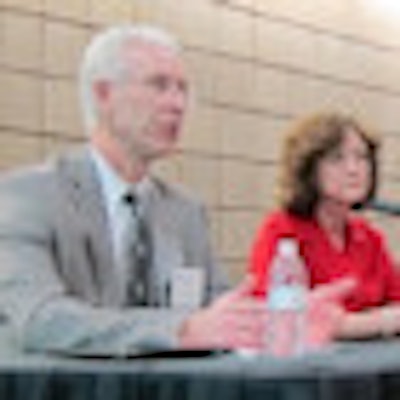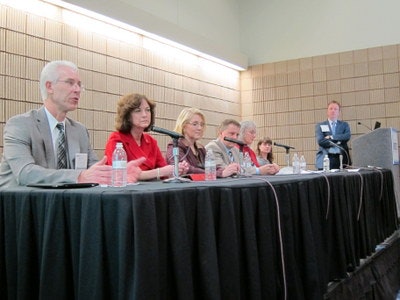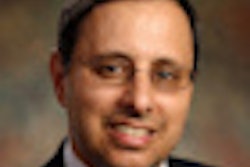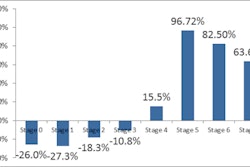
NEW ORLEANS - Recruiting and retaining healthcare IT personnel and ensuring data security in an era of bring-your-own mobile devices are among the top concerns of healthcare IT leaders, according to survey results presented on Monday at the Healthcare Information and Management Systems Society (HIMSS) meeting.
The survey also found that more than half of hospitals have qualified for incentive payments under the U.S. government's meaningful use program to promote the adoption of healthcare IT. But questions linger over the value of the massive investments that are being made by healthcare providers -- questions that HIMSS executives sought to answer by affirming their belief in the value of healthcare IT.
This year's HIMSS Leadership Survey was conducted from December 2012 to February 2013; 298 senior IT executives were queried on issues ranging from their major IT priorities in the next two years to their progress in qualifying for meaningful use payments in stage 1 of the federal program.
IT staffing issues emerged as a major issue in the 2012 edition of the survey, a phenomenon that's been replicated this year. Lack of staffing resources was cited by 21% of healthcare organizations as the biggest barrier blocking them from implementing IT -- the highest-ranked barrier in the survey.
 |
| Mike Rozmus, chief information officer of RMH Healthcare, discusses important healthcare IT issues at the HIMSS Leadership Survey press briefing on Monday. |
The personnel crunch is forcing many organizations to get creative in filling their staffing needs, especially as many IT personnel get so caught up in day-to-day operations that they aren't able to support new projects.
"We have reached out into the local community in terms of educational institutions to bring more young folks into the fold and get them trained so they can support us in our deployments," said Mike Rozmus, chief information officer of RMH Healthcare. "We've also used contract labor in our consulting community more than we ever have in the past; they are bringing a whole lot of value to some of the implementation work that we can't really spread across the field of employees that we have right now."
Other speakers said the personnel crunch has forced them to do more with less, and prioritize certain projects such as meaningful use and conversion to new ICD-10 codes, which are set to go into effect next year. "There are some very good projects with very good return on investment that we are going to have to set aside because we are focusing on key initiatives," Rozmus said.
On the positive side, 21% also cited staffing woes last year, so at least the problem hasn't gotten worse. And the number of survey respondents expecting staffing changes in the next 12 months actually dropped -- to 51% this year, compared with 61% last year -- perhaps a sign that IT personnel are expected to stay put in existing jobs.
On the security side, there was good news and bad news. The good news is that the number of survey respondents who felt they had inadequate security systems in place plummeted to 4% this year, compared with a whopping 32% in the 2012 edition of the survey.
The bad news is that mobile device security has begun to vex HIT managers. Some 36% said they were concerned about securing information on mobile devices this year, skyrocketing from just 6% in 2012. Much of the concern comes from mobile devices brought to work by clinical personnel that may be running outside of a healthcare organization's existing security network.
For example, staff at the University of Missouri in Kansas City feel they have implemented robust security systems, but these systems can be undermined by personnel bringing their own devices, especially considering that some medical students enrolled are as young as 18, said Mitzi Cardenas, chief information officer and senior vice president of strategy and business development at Truman Medical Centers.
"Over the things we can control, we have a pretty good handle; it's the things that we can't control," Cardenas said. "They have cell phones and tablets and things they bring on their own, and it's these things we are concerned about. We're using education as a way to help offset some of these issues."
In other findings, 66% of respondents had qualified for meaningful use payments, with another 24% expected in 2013. While achieving meaningful use is still the top IT priority over the next two years, the percentage of respondents who cited it as a top concern dropped to 28% this year, compared with 38% last year.
As the meaningful use program moves forward, questions will naturally develop over the return on investment for the huge expenditures being made. But a short-term focus on return on investment could be missing the point, according to Steve Lieber, CEO of HIMSS.
"It very much is around the long-term value and investment that's realized, than just simply what we're going to get this year or next year for the dollars," Lieber said. "The incentive program has done exactly what President Obama intended it to do in 2009: spur the investment of information technology in a place where it largely didn't exist."



















